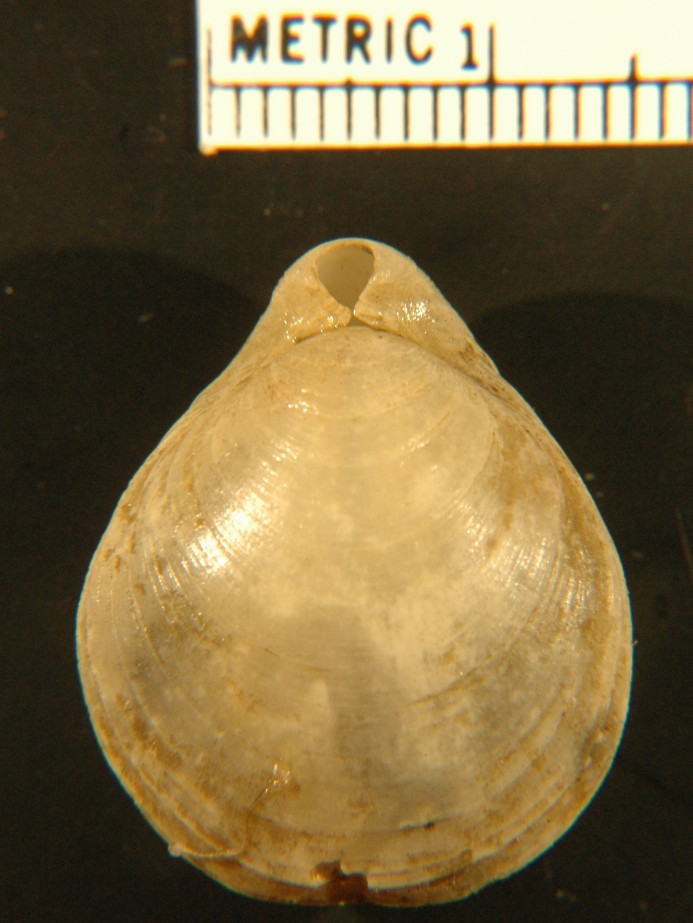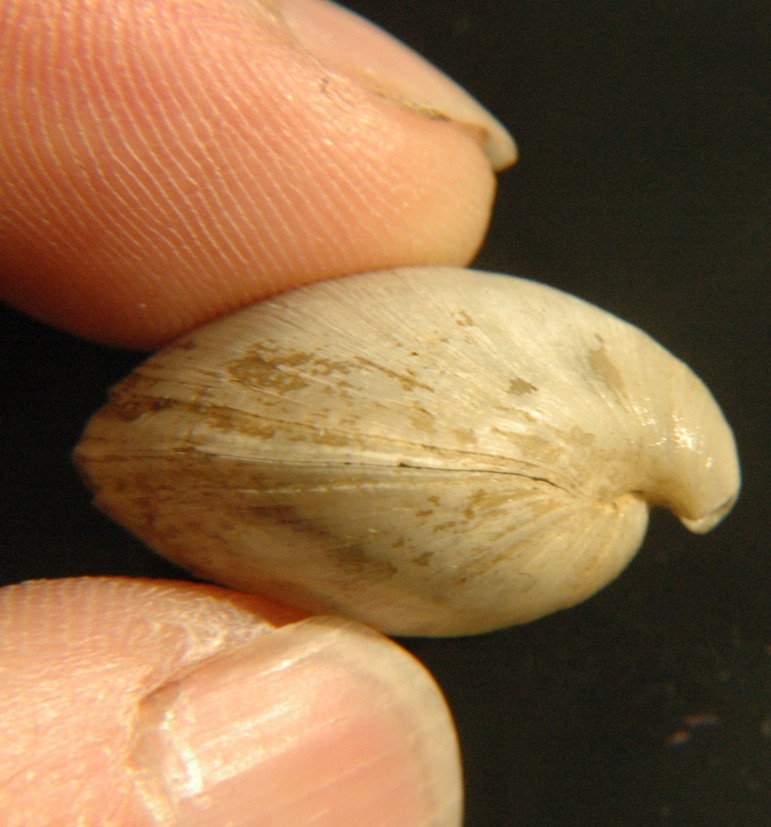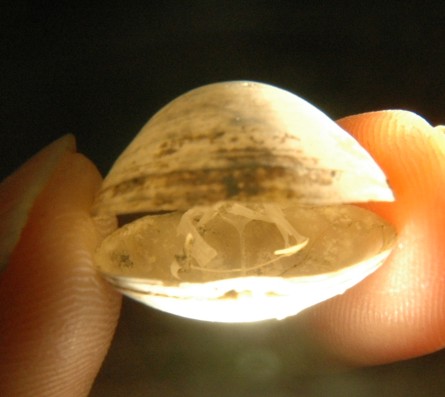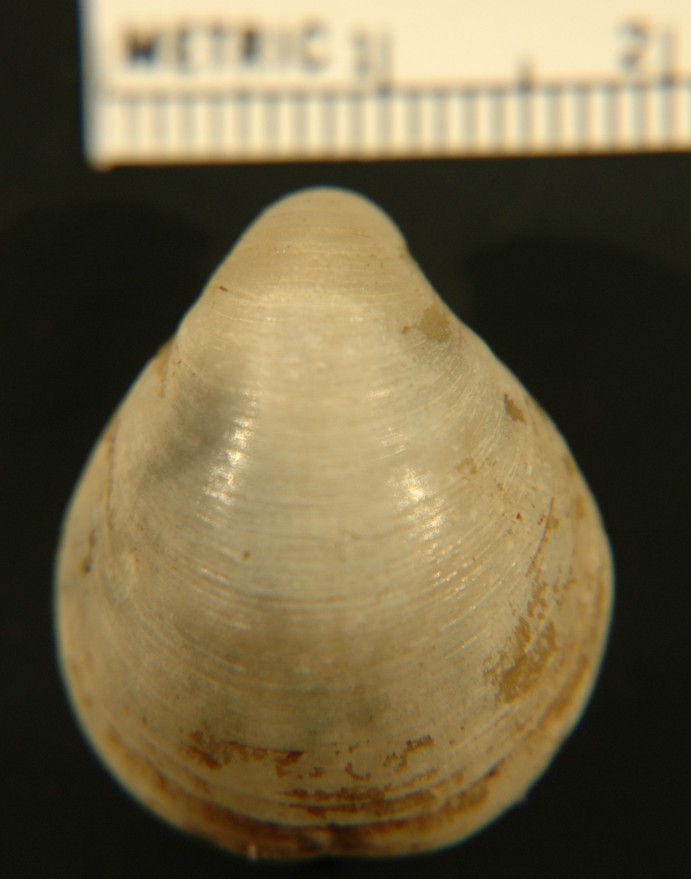How to Distinguish from Similar Species: Crania californica has no pedicle and one valve is cemented to the rock like a jingle shell. Terebratalia transversa is wider than long and the anterior margin (opening) of the shell is undulating. Terebratulina unguicula has small teeth along the anterior margin, the shell is not translucent, and the apex of the shell is completely obliterated by the hole for the pedicle.
Geographical Range: British Columbia to Southern California, Sea of Japan
Depth Range: Occasionally intertidal; subtidal to 486 m
Habitat: Attached to rock
Biology/Natural History: Sexes are separate.
Articulate brachiopods such as this species have interlocking
teeth
at the hinge. The teeth prevent the shell valves
from being opened more than a few degrees from each other, and will
break
at the hinge if an attempt is made to open the shell farther.
Articulate
brachiopods also have a blind gut with no anus, so any undigested
material
must be spit back up through the mouth.
| Return to: | |||
| Main Page | Alphabetic Index | Systematic Index | Glossary |
References:
Dichotomous Keys:Kozloff 1987, 1996
General References:
Harbo,
1999
Johnson
and Snook, 1955
Rice,
1973
Scientific Articles:
Web sites:
General Notes and
Observations: Locations,
abundances, unusual behaviors:
I have rarely seen this brachiopod near Rosario though it is said to
be common in some places (most often subtidally). It can be
found
in Enteroctopus
dofleini middens near Rosario. Terebratalia
transversa is far more commonly found in our
area.

This view of the ventral side shows how the ventral (larger) valve overlaps the dorsal (smaller) valve near the hinge, and has a hole through which the pedicle projects. The pedicle is a fleshy stalk used to anchor the animal to a rock.

As can be seen in this side view, the larger (ventral) valve
overlaps the smaller valve
where the pedicle
exits. The ventral valve
is on top.
Articulate brachiopods generally live with the ventral valve
upwards like this.

A view inside the shell, such as this view made by shining a
strong
light through the dorsal shell (on bottom), shows the brachial arms
which
support the lophophore.
Such a scaffold is characteristic of Order Terebratulida.
Authors and Editors of Page:
Dave Cowles (2007): Created original page
CSS coding for page developed by Jonathan Cowles (2007)
